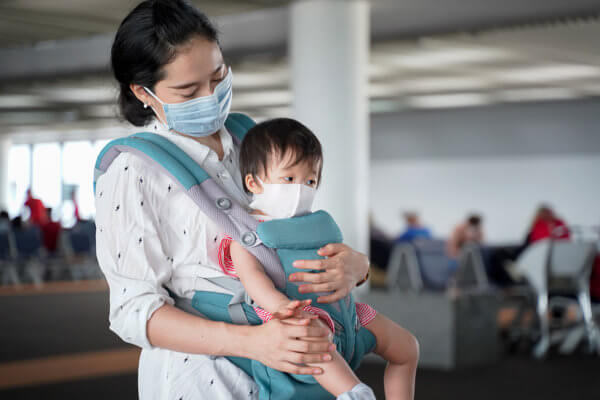
By Nicole Gregory
Bringing a new baby home can be difficult for your first “baby”—that is, a cat or dog who has reigned as the most beloved one in your household until that day. To make sure your infant is safe and your pet can adjust as well as possible to your new family member, keep in mind these tips from the Humane Society of the United States:
Before the baby is born:
• Take your pet to the vet for a health exam and all necessary vaccinations.
• Spay or neuter your pet (doing so will make your pet calmer and less likely to bite).
• Address pet behavior problems with training.
• Accustom your pet to baby-related noises months before the baby is expected. Use the rocking chair, turn on the infant swing and play sounds of a baby gurgling or crying.
• Talk to your pet about the baby, using the baby’s name, if you’ve selected one.
After the baby is born:
• Have your partner bring home an item of clothing with the baby’s scent on it for your pet to investigate.
• Have someone else hold the baby when you step into the house so you can greet your pet with a warm, calm welcome.
• Try to maintain regular pet routines such as feedings and walks.
• Never force interaction between your pet and the baby.
• Never leave the baby unattended with your pet.
NEXT: THE POWER OF PETS
{pagebreak}
Pet Power
2–5 years
If you’re hesitant about getting a pet for your toddler because of the extra work and cost involved, consider this: Experts say that the benefits of having a pet for a small child can be far-reaching, helping to build confidence, self-esteem and compassion. In the relationship with a pet, a toddler can learn her first lessons about loyalty and trust.
How does all of this happen? With you at your child’s side, of course. Small children are naturally drawn to animals, and they first learn how to treat them by watching you. Do you swat the cat out of the way? Curse at the dog? “A toddler will watch how you hold the animal and how you pet it. This is a great chance for you to model kindness,” says Michele Borba, EdD, author of The Big Book of Parenting Solutions (Jossey-Bass, 2010), who appears regularly on NBC’s Today show as a parenting expert.
Actions have consequences
“Having a pet helps toddlers—who are by nature egocentric—to begin to understand the bigger world around them,” says Borba. Many toddlers will respond to a small animal with love and affection. But they may also be tempted to see what happens when they give the cat’s tail a yank or the pet mouse an extra squeeze. “Toddlers see that their actions have an impact on a pet,” says Borba. “Point out the consequences by saying something like ‘If you pull the dog’s hair, it hurts him, but if you pet the dog softly, he’ll wag his tail.’” For the sake of your child’s safety as well as the pet’s, you need to be present to explain how certain behaviors are not okay because they hurt others. How you respond as a family to the events that come up in life with a pet—taking it to the vet when it’s sick, training it, making sure it is safe, etc.—can demonstrate your family’s values, such as caring for nature or helping the weakest among us.
Life and death
It doesn’t take long for children to form powerful bonds with a pet. They will often consider a pet as part of the family, as important as a sibling. They may talk to the pet and tell it secrets, and project feelings on the animal, such as fear or loneliness, which they can’t quite admit to having themselves. A pet can offer a particular comfort to children that the grown-up world can’t always provide.
The death of a pet needs special attention. Nancy Gel, director of the Oak Glen Nursery School in Los Angeles, has experienced a number of pet deaths in her classes of 2- to 4-year-old children. While they feel sad about these losses, “children are not really scared by death,” says Gel. Once, when a favorite goldfish died, she asked the children to choose a way to honor the fish; the children voted to have a parade for it in the room. Another time, when a beloved class guinea pig named Lisa died, Gel laid the animal on a scarf and pointed out the ways in which it appeared different dead than it did alive. The children were allowed to touch her, helped in her burial and later wrote letters to the guinea pig saying what they’d loved about her.
“Even a 3-year-old can go through a ritual of grieving,” says Borba. To keep a child from developing fears about death, the two simple reasons to give for the death of a pet are that it was very old or that it got a disease. “Do not say the pet is going to sleep,” says Borba. “Be clear that it has died and is not coming back.”
From the day the pet arrives in your house to the moment it dies, it will most likely play a huge role in your child’s life and imagination, engaging the instinct for love and care in a way that only an animal can.
For more information on introducing pets to a new baby, visit hsus.org.
Nicole Gregory is a writer and editor in Los Angeles who assists her 12-year-old son, Charlie, in taking loving care of their household pets: two rabbits and a cat.
PLUS: Why pets are good for toddlers.



